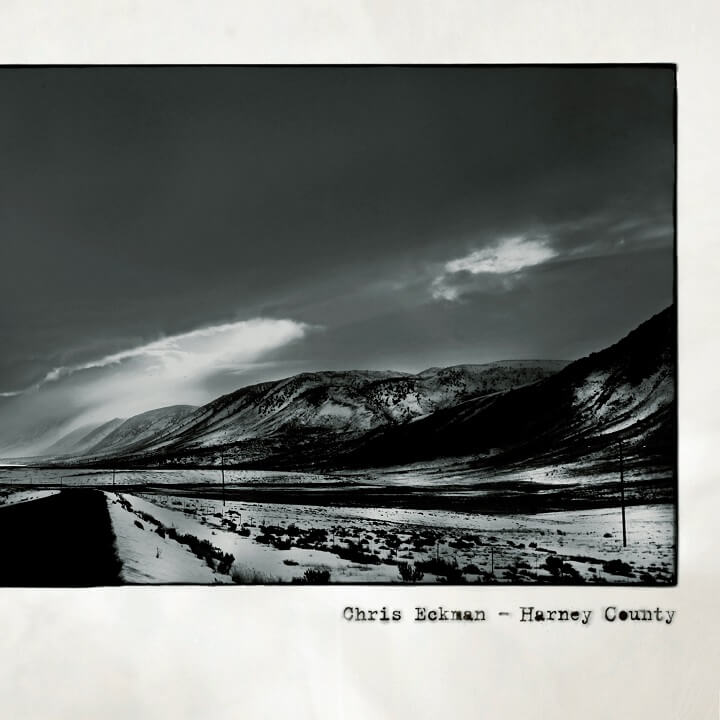“THE SONGS OF CHRIS ECKMAN CREATE IMAGES OF NORTH AMERICAN LANDSCAPES IN THE SPIRIT OF FOLK AND AMERICANA.” – BYTE FM
INFO
ARTIST
RELEASE DATE
06.12.2013
CATALOGUE NO.
GRCD/LP/DIGITAL 785
TRACKLIST
Credits:
Backing Vocals – Anda Eckman
Bass [Upright] – Žiga Golob
Drums, Percussion, Recorded By – Milan Cimfe
Electric Guitar – Paul Austin (2) (tracks: 2)
Harmonica – Terry Lee Hale (tracks: 6)
Mastered By – Ric Vaughan
Recorded By – Pavel Bohatý
Vocals, Guitar, Keyboards, Producer – Chris Eckman
Nothing Left To Hate
The Carnival Smoke
Requiem For The Old Skool Heavy
Katy Cruel
Sound Of No Return
Sound Of No Return
Rock Springs
Ghosts Along The Border
WATCH & LISTEN
Story
A little over twenty years ago, I was in Harney County for the first time after reading the memoirs of author William Kittredge. The book is called “Owning It All” and it was a very influential work for me. While Kittredge celebrates the broad-screen landscape of this desert county in southeastern Oregon, he also criticizes his family’s reckless consumption of the landscape through several generations of ranching. It is a tragic and cautionary tale that reminds us that the land we think is ours can turn against us. We are all at the mercy of the forces of nature, more than we care to admit. It is a book about failed dreams in a place of raw beauty. By the time I finished reading it, I knew I had to see for myself this land that Kittredge had written about so unsparingly. It became a kind of compulsion, and I have traveled there many times since.
After returning from that first trip, I wrote a song called “Death At Low Water,” which ended up on the Chris & Carla album “Life Full Of Holes.” The song seemed inspired by the landscape and dusty towns I had just visited. The lyrics recall landmarks in and around Harney County, like Steens Mountain and Denio, the southern Nevada border town. It’s kind of a brutal song, but it’s also a song about faith, family, and holding on to the things that really matter.
Even then, I thought I should write and sing a collection of Harney County songs one day. With this new album, I finally got around to doing just that. Most of the songs on this album came to life as I honed the sounds and lyrics of the Walkabouts’ last album, “Travels In The Dustland.” In a way, they have the same roots as the “Dustland” songs, but belonged in a different context. They are less about musical gestures and more about what is actually sung. The songs for “Travels In The Dustland” were also desert songs, but they were about abstract and mythical landscapes. Here, the events and characters are imagined, but the places are all the more real, as are the roads I drove myself. I have fond memories of the climbs and bends of those roads. I can see Steens Mountain in the distance high above the Alvord Desert, as well as the scattered trailer parks and ranches. These specific landscape memories are the origins of this music and the reason I named the album “Harney County.”
The county’s great sagebrush steppes, windswept mountains, and swampy plains (where huge flocks of birds can sometimes be seen) are places where people seem small and often insignificant. The winters are long and the country is covered in masses of snow, while the rest of the year the sun beats down relentlessly. These relentless elements cast a long shadow over the characters in the songs. They struggle to do their best in a land where beauty and hardship go hand in hand.
I wanted a sense of rawness and restraint in the recording of this album. It seemed to me that these qualities were already in the songs, the music should reflect that. Double bass player Žiga Golob and I recorded the songs live over two days in a sprawling, reverberant studio on the outskirts of Prague. The recording room has room for an 80-piece orchestra, and there we were, face to face, tiny and a little intimidated by the surroundings. Given the content of the song, it felt fitting.
Žiga gave the essential impetus for these recordings, and I couldn’t have made the album without him. Milan Cimfe joined us as a sound engineer and also as an occasional drummer. My wife Anda sang backing vocals on two songs, Paul Austin played electric guitar on “The Carnival Smoke”, and my old friend Terry Lee Hale played the alienated harmonica on “Many Moons”.
Originally, I thought this album was supossecd to sound like the “Nebraska” dub-album. We have not quite achieved that, but I would like to think that small remnants of that idea remain. What was left out of this music is probably more important than what was added. So there is plenty of room for the stories to breathe.
And now that the album is done, I can find the next origin of my obsession. – Chris Eckman/Ljubljana/ Sept. 2013








